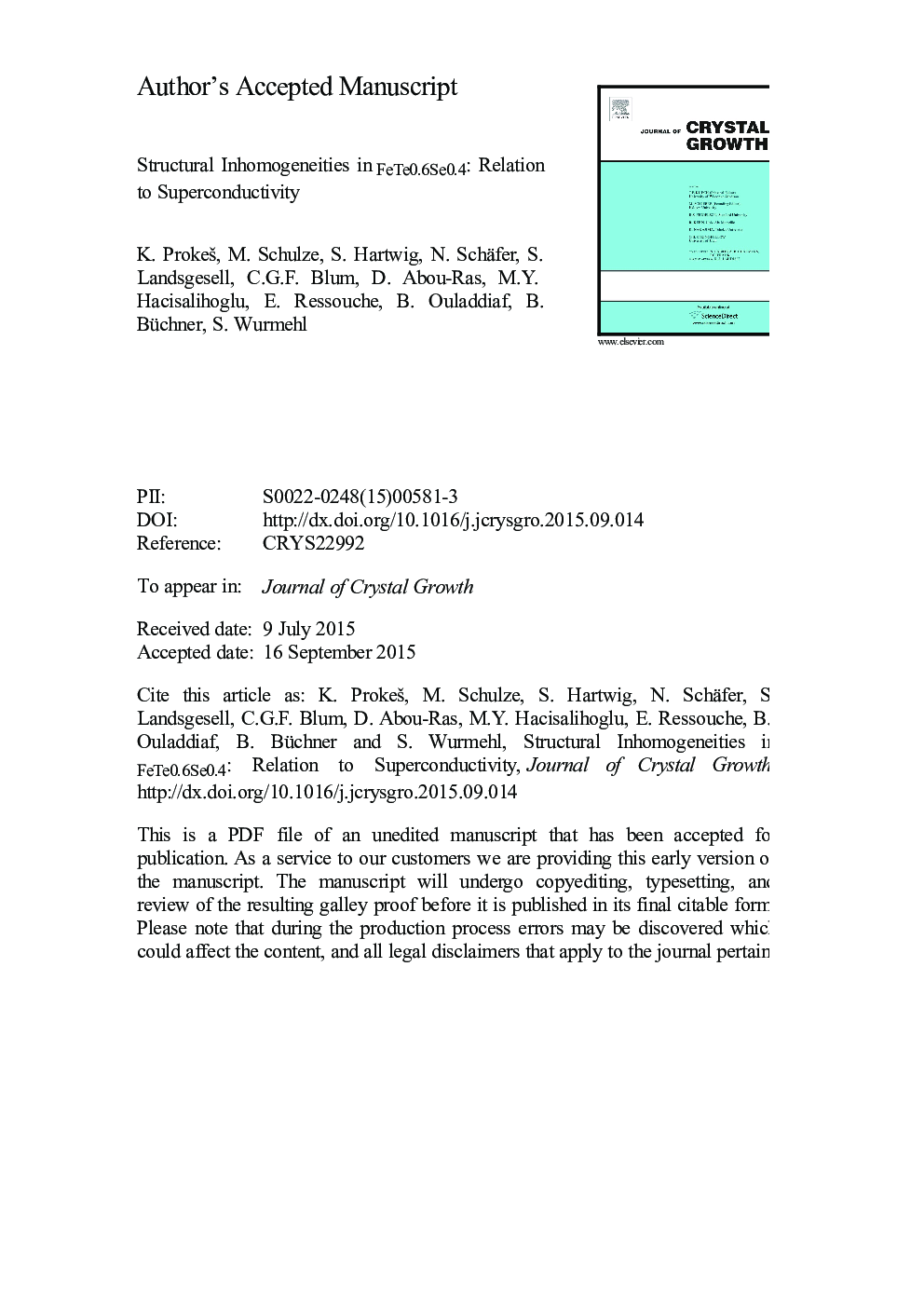| Article ID | Journal | Published Year | Pages | File Type |
|---|---|---|---|---|
| 8149554 | Journal of Crystal Growth | 2015 | 29 Pages |
Abstract
Chemical and structural phase compositions of two single-crystalline samples prepared with different cooling rates from stoichiometric FeTe0.6Se0.4 melts were studied. Both types of samples were investigated in a very comprehensive way using magnetic and electrical transport measurements combined with X-ray, neutron and electron backscatter diffraction. We show that slowly cooled samples are homogeneous on a microscopic scale with only a small excess of iron. Those slowly cooled samples do not exhibit bulk superconductivity down to 1.8Â K. In contrast, fast-cooled samples are superconducting below about 14Â K but are composed of several chemical phases: they consist of a matrix preserving the crystal structure of slow-cooled samples, and of core-shell structured dendritic inclusions (about 20-30Â vol%). These have different crystal structures and chemical compositions and order magnetically at temperatures far above the superconducting transition temperature of the inhomogeneous samples. These structural and chemical inhomogeneities seem to play a vital role in the superconducting properties of this and similar iron-based systems as they lead to internal stress and act in a similar way as the application of the external pressure that reportedly increase the superconducting transition temperature in many iron pnictides and chalcogenides. We argue that a phase pure, homogeneous and stress-free FeTe0.6Se0.4 is non-superconducting.
Keywords
Related Topics
Physical Sciences and Engineering
Physics and Astronomy
Condensed Matter Physics
Authors
K. ProkeÅ¡, M. Schulze, S. Hartwig, N. Schäfer, S. Landsgesell, C.G.F. Blum, D. Abou-Ras, M.Y. Hacisalihoglu, E. Ressouche, B. Ouladdiaf, B. Büchner, S. Wurmehl,
